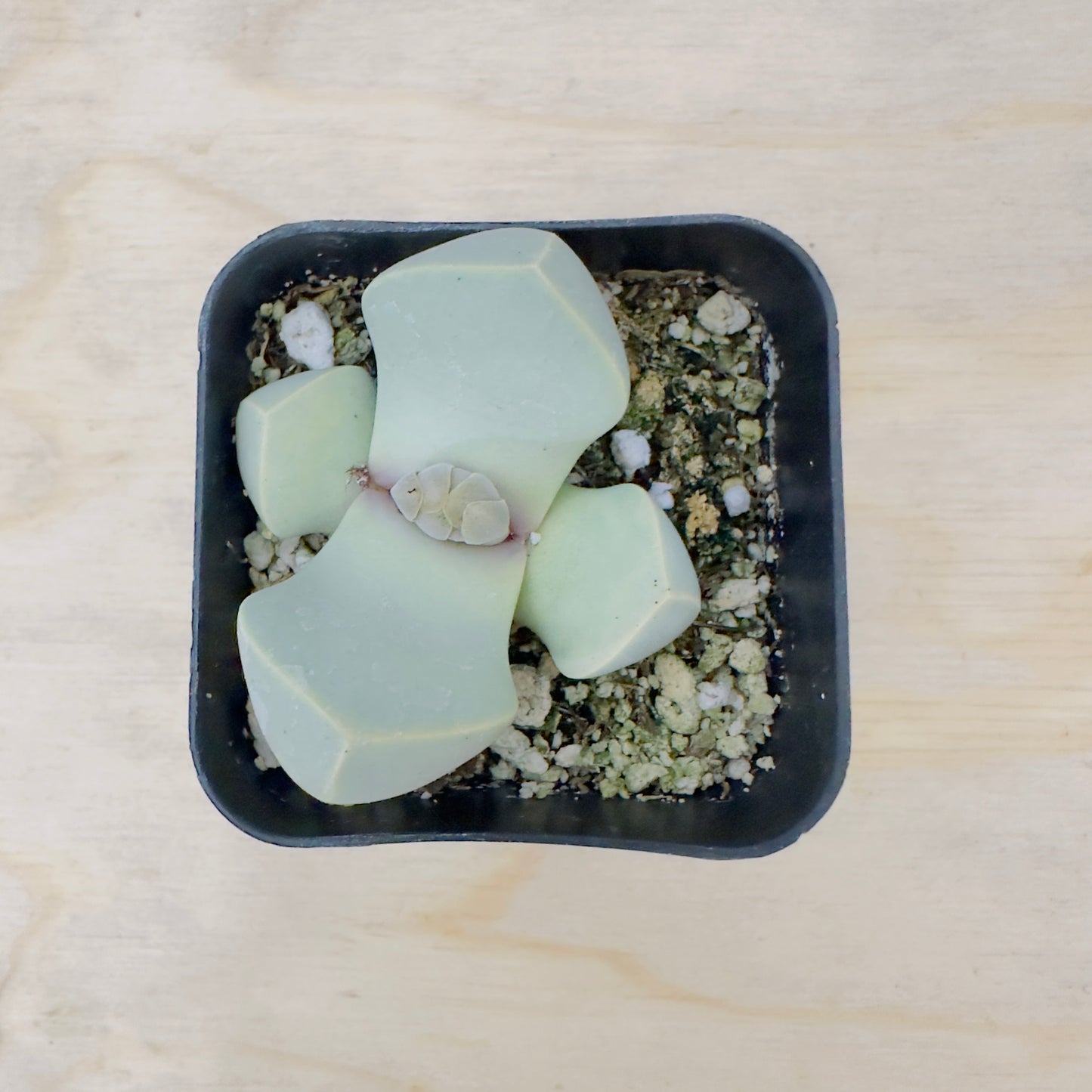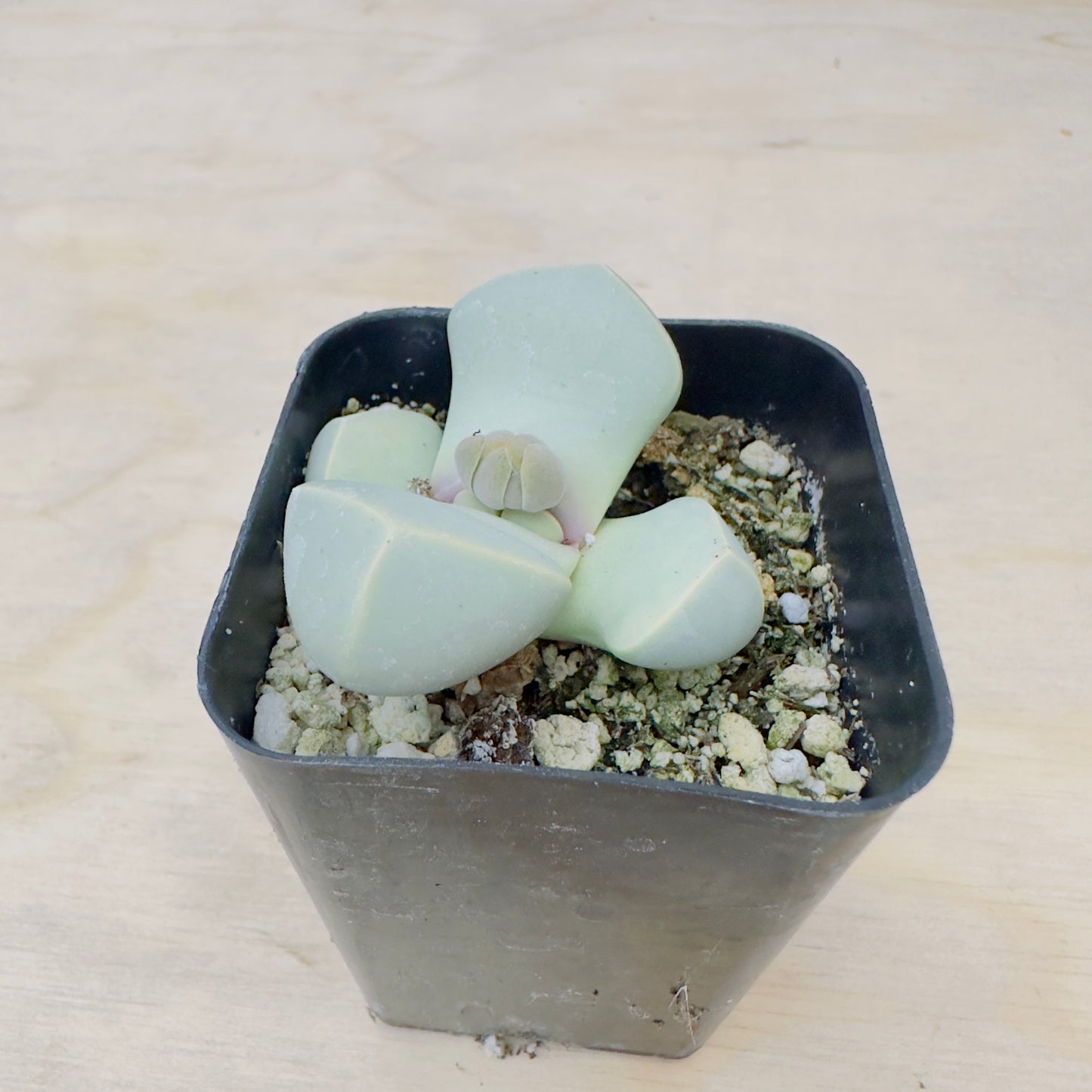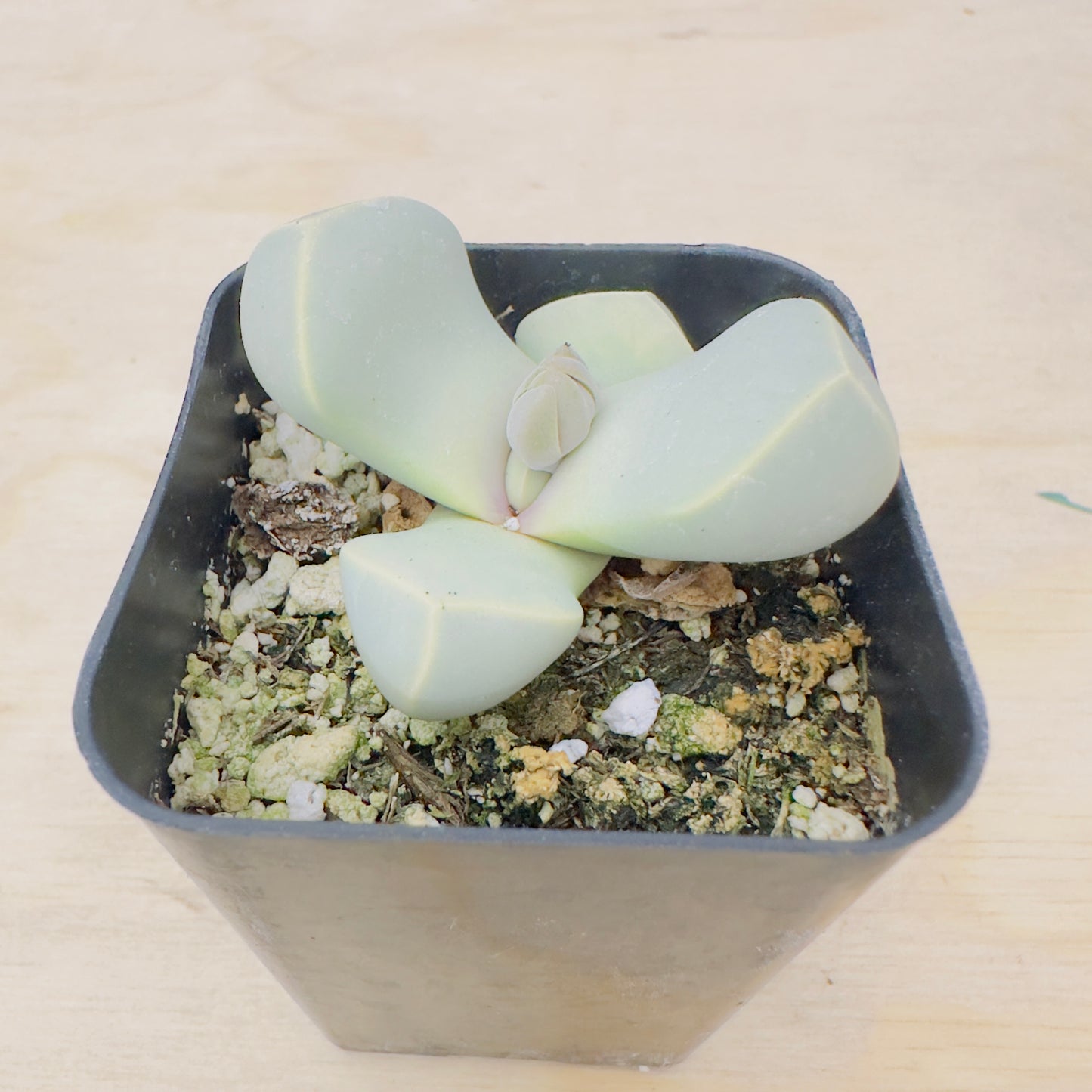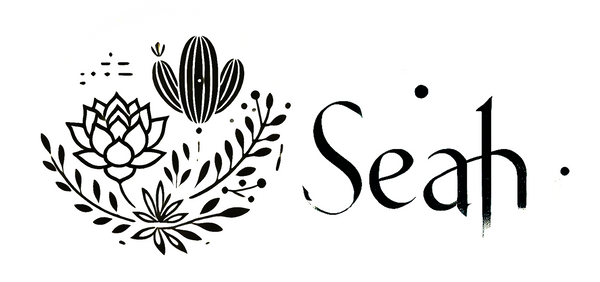Lapidaria Margaretae - Karoo Rose
Lapidaria Margaretae - Karoo Rose
In stock
Couldn't load pickup availability
📝 Description
Morphological Characteristics
Lapidaria margaretae is a rare and captivating succulent that belongs to the ice plant family. It is renowned for its stony appearance and geometric precision, often mistaken for a living stone (Lithops or Pleiospilos) due to its mimicry of surrounding quartz gravel in its native habitat.
The plant forms a compact rosette of 2–4 pairs of thick, angular leaves per growth point. Each leaf is triangular to ovate in shape, with smooth, matte surfaces in hues ranging from pale gray to beige with hints of pink or lavender, depending on sunlight and temperature. The surface is often lightly textured, resembling worn stone.
Its camouflaged appearance is a survival adaptation to extreme aridity and bright sun. The leaf pairs are spaced slightly apart rather than fused, distinguishing it from Lithops. The rosette typically remains under 5 cm (2 inches) tall and across.
In late autumn to early winter, mature plants produce bright yellow, daisy-like flowers that open in the afternoon sun. These flowers emerge from the leaf center and can measure up to 4 cm (1.5 inches) across, offering a vivid contrast to the muted foliage.
⸻
Growth Habits
Lapidaria margaretae is a very slow-growing, non-clumping succulent that thrives in harsh, dry climates with excellent drainage. It enters dormancy during hot summers and resumes growth in cooler autumn and spring months.
It is sensitive to overwatering and requires a dry rest period to avoid root rot. Ideal for windowsills, greenhouses, and collectors focused on small, architectural succulents.
⸻
Maintenance Points
• Lighting: Requires bright indirect light to full sun. Morning sun and filtered light are ideal. Indoors, place in a bright south- or east-facing window.
• Watering: Water sparingly during active growth (fall to spring). Allow soil to dry completely between waterings. During dormancy (summer), water only enough to prevent shriveling.
• Soil: Requires extremely well-draining, gritty soil. Use cactus mix with 50% added pumice, perlite, or crushed lava rock.
• Temperature: Prefers 18–24°C (65–75°F). Tolerates light frost to -5°C (23°F) if kept dry.
• Fertilization: Light feeding once per growing season with diluted succulent fertilizer. Avoid excess nutrients.
• Potting: Use shallow clay pots with ample drainage holes. Avoid repotting unless rootbound.
• Handling: Delicate structure—minimize handling to avoid dislodging or damaging leaves. Camouflage makes pests hard to spot, so inspect closely.
⸻
Display & Use
Lapidaria margaretae is prized in miniature desert gardens, collector trays, and rock-mimic succulent displays. Its small size and natural mimicry make it ideal for:
• Zen or alpine dish gardens
• Paired arrangements with Lithops, Argyroderma, or Pleiospilos
• Gravel-topped ceramic containers for a naturalistic look
• Educational displays on plant camouflage or arid-adapted flora
Pairs well with other small, slow-growing species that prefer dry winters and cool light, making it a unique and conversation-worthy centerpiece in niche succulent collections.
🌿 Care Tips
Plant Care
Light
Water
Soil
Temperature
🌟 Note: It’s normal for succulents to appear slightly shriveled after shipping. They usually recover within a few days in a suitable environment.
📦 Shipping Info
Seah Shipping Policy
Effective Date: November 2025
This Shipping Policy applies to orders delivered within the continental United States (the lower 48 states). By purchasing from Seah, you agree to the terms below.
1) Shipping Cost & Free Shipping
- Automatic rate calculation: Shipping is calculated at checkout based on weight, destination ZIP and carrier rates.
- Free Standard Shipping: Orders $59+ (pre-tax, after discounts) ship free to the lower 48 states.
- Alaska, Hawaii, Puerto Rico & other territories: Not eligible for free shipping or standard flat offers at this time.
- Taxes/Duties: Applicable sales tax and any fees are shown at checkout.
2) Processing Schedule
- Business days only: We process and ship Monday–Friday. No shipping on weekends or U.S. federal holidays.
- Handling time: 1–3 business days after payment confirmation.
- Cut-off time: Orders placed before 3:00 PM (PST) are prioritized for same-day processing; others roll to the next business day.
- Changes/Cancellations: Email support@seah.co within 12 hours of purchase; after that, the order may already be in processing.
3) Transit Times
| Method | Estimated Transit | Total ETA (Handling + Transit) |
|---|---|---|
| Standard | 5–8 business days | 6–11 business days |
| Express | 3–4 business days | 4–7 business days |
ETAs are estimates. Weather, holidays, carrier delays or high-volume periods may extend delivery times.
4) Seasonal Temperature & Plant Safety
- Winter (Nov–Mar): We strongly recommend adding a heat pack at checkout to protect plants from freezing. Orders shipped without a heat pack during cold conditions are not covered for cold damage.
- Summer heat: During extreme heat waves, we may hold shipments until temperatures normalize. We’ll notify you if there’s a hold.
- Packaging: Plants are carefully packed (bare-root or potted by type/size) to minimize transit stress.
5) Carriers & Tracking
- We ship via USPS / UPS / FedEx, selected automatically for best service to your address.
- When your order ships, you’ll receive a tracking email. Tracking typically activates within 24 hours.
- If you haven’t received tracking within 3 business days, contact us at support@seah.co or +1 (626)-999-1314.
6) Address Changes & Delivery Issues
- Before shipment: Request address changes within 12 hours of ordering.
- After shipment: We can’t modify the address once dispatched. Please contact the carrier for redirection options.
- PO Boxes: Supported for USPS only; UPS/FedEx require a street address.
- Seah isn’t responsible for delays or loss due to incorrect addresses provided at checkout.
7) Service Area
We currently ship to the continental U.S. (lower 48 states). Orders to AK/HI/PR and other territories are not eligible for free shipping and may be restricted.
8) Support
- Hours: Mon–Fri, 9:00 AM – 5:00 PM (PST)
- Phone: +1 (626)-999-1314
- Email: support@seah.co
- Address: 7870 Margaux Pl, Rancho Cucamonga, CA 91739, United States
Thank you for supporting our California nursery—each plant is hand-selected and packed with care. 🌱






